LAMM M1.2
0% – 3 Year Financing Available!
LAMM M1.2 Reference Hybrid Power Amplifier
The M1.2 Reference is a masterful blend of design and engineering simplicity. It is a pure class A amplifier featuring high-speed MOS-FET transistors in the output stage with no overall feedback and special switch-selectable bias/voltage settings for 8- or 4-Ohm operation.
Product Description
0% – 3 Year Financing Available!
LAMM M1.2 Reference Hybrid Power Amplifier
Model M1.2 Reference represents top of the line in LAMM hybrid and solid-state audio equipment. Power amplifier model M1.2 Reference is a pinnacle of its designer’s professional career — a result of years of intensive research directed at attaining the most accurate reproduction of recorded music. Unique topology and application of the most advanced technological resources and processes bring the M1.2 Reference to a threshold of excellence in sound reproduction. A distinctive feature of the M1.2 Reference is its presentation of the extraordinary transparency of perceived sound which in turn assures the recreation of a three dimensional soundstage in the home, recording studio, etc. without boundaries and limitations.
The M1.2 Reference is a masterful blend of design and engineering simplicity. It is a pure class A amplifier featuring high-speed MOS-FET transistors in the output stage with no overall feedback and special switch-selectable bias/voltage settings for 8- or 4-Ohm operation.
The bias setting switch assures the pure class A operation of the M1.2 Reference when matched with a speaker load of either 4 or 8 Ohms, whereas conventional class A designs double the power into 4 Ohms resulting in one fourth of the doubled power in class A and the rest in class AB. The M1.2 Reference is a hybrid design with one specially selected 6922 vacuum triode in the second stage.The M1.2 Reference is conservatively rated to deliver 110 Watts into 8 and 4 Ohms in pure class A operation (high and low impedance settings, respectively); 220 Watts into 2 Ohms, and 400 Watts into 1 Ohm (low impedance setting), continuous. The M1.2 Reference can drive any known speaker. The harmonic structure remains intact regardless of the speaker load, while the extreme clarity is maintained at all power levels.
Each amplifier is carefully constructed and hand-crafted with the finest materials and parts currently available, some of which include military graded low noise DALE metal film resistors; PRC wire wound resistors; ELECTROCUBE and ROEDERSTEIN film capacitors; high frequency switching grade CORNELL DUBILIER electrolytic capacitors; BOURNS multi-turn potentiometers; HAMMOND filter chokes; military graded low noise long life vacuum tubes; high quality heavy duty gold-plated binding posts and RCA jacks; gold-plated NEUTRIC XLR connectors, and CAMAC-type coaxial connectors from FISCHER. Special attention was given to designing the toroidal power transformer, which has no mechanical contact with either the transformer cover or the chassis and is suspended in a special encapsulant that almost completely absorbs even the residual mechanical vibrations. This plays a significant role in assuring the absolutely unique clarity and micro-resolution during sound reproduction.
The M1.2 Reference works on all world AC line voltages.
U.S. Patent No. D368,261; U.S. Patent No. 5,470,795; other patents pending.
Here is what the prominent audio critics have said about the M1.2
…I am…approaching a decade of using Lamm amplifiers (and preamplifiers) exclusively, and I’ve done so simply because they mimic the sound of live music toa degree that most other products do not. …Lamm electronics never fail to touch those of us who appreciate a human portrayal of music, as opposed to one that’s strictly reproduction, a hi-fi portrayal.
…even with all of their naturalness, the Lamm M1.2 Reference amps can convey fireworks. Their bass, for instance, has impressive depth and density, along with a touch of warmth that gives the region greater fullness and bloom than that of most purely solid-state amps.
..In the mids, no solid-state amp I’ve heard can touch the M1.2 Reference, whose portrayal of voice is much of the reason why Lamm electronics are called “Natural” and “organic” in the first place There is a sense of fidelity and beauty…
…If being an audiophileis about the music for you…the Lamm M1.2 REference amps are a smart choice. They’re certainly a REviewers’ Choice and one of the very best amplifiers you can buy.
Marc Mickelson, Soundstage.com (August, 2004)
…When you buy a Lamm product, you buy a piece of Vladimir Lamm — a piece of his personal vision of what a high-end audio product should be. No marketing department is involved in the design, no here-today, gone-tomorrow trendiness. You’re buying an amplifier that’s built the way Lamm likes it — and sounds the way he wants it to.
…In fact, the owner of a pair of M1.2s will be in possession of some of the most special amplifying devices money can buy. Vladimir Lamm’s knowledge base was gained from scientific research on human hearing in the former USSR. His circuits are designed in accordance with these studies. That means that if you find this amplifier to be the best for you, there’s no cookie-cutter design like it available elsewhere.
…The Lamm M1.2 Reference has helped me to determine exactly what sets high-end audio components apart from their mass-produced counterparts. The Lamm M1.2, probably more than any other product I’ve experienced, is the result of a personal vision, of one person’s skill and commitment.
Jeff Fritz, UltraAudio.com (April, 2004)
…The original M1.1 was in production for more than 10 years with no changes, updates, or revisions. If that’s not a record for a high-end amplifier, I don’t know what is. Vladimir Lamm changes his products only when he feels he can offer a meaningful improvement in performance, not when it seems expedient to introduce a new model or variant. According to Lamm, the only reasons the M1.1 has been updated are that better parts are now available, and that 10 years of collecting performance data justified a redesign.
…The physical experience of a Lamm product is a manifestation of the Einsteinian dictum: Make everything as simple as possible, but no simpler.
…The M1.2s proved themselves bulletproof in everyday use.
….M1.2’s defining character trait was unflinching honesty in conveying the true nature of the music that passed through it. It did not strip away veils so much as it seemed to eliminate most of the intermediate steps that lay between the original performance and its reproduction. Try as I might, I could not hear the M1.2 adding anything
….Dynamic and transient responsiveness were ideal and seamless.
…In terms of timbre, the Lamm was something of a walking contradiction –or, perhaps, more of a perfect Hegelian synthesis of seemingly contradictory characteristics. It was bogglingly transparent and had state-of-the-art resolving capabilities, but that was only half the story. That resolution and transparency were combined with a harmonic completeness, timbral richness, and glow…only without the slowness and caramel coloration.
…The Lamms were uncannily accurate at expressing the way each instrument or voice projected into space. …The M1.2s’ ability to particularize each instrument in its natural way was always captivating, contributing so much to the sheer believability of its sound. Imaging was, therefore, extremely convincing.
…Soundstaging performance was simple to decribe: What was called for by the recording appeared in the room.
…The Lamm did not knock me off my feet when I first heard it because it wasn’t designed to do so Like a Mercedes-Benz, it is made to impress over and for the long run with sustained and systemic excellence. In a strange way, this is an amp that will select only those who respond to it on the deepest levels of understanding.
…each Lamm amplifier that I have reviewed has challeneged by ability to describe its essence. At last, I admit defeat. Trying to explain the ultimate experience of listening to the M1.2 Reference and why it is so special is like trying to explain why you’ve fallen in love with someone; matters of the heart cannot be reduced to words on paper.
…Hearing music through nearly any other amps after hearing the M1.2s was the difference between seeing a very good lithograph of a masterpiece after seeing the original, from two feet away, in a museum.
…For once, “Reference” is not only the most accurate, but the only appropriate descriptor.
Paul Bolin, Stereophile (February, 2005)
…These amplifiers were made as well as Mr. Lamm can make them. They are the mature expression of a talented and focused designer.
[on awarding the Brutus Award to the M1.2 Reference] — This was a surprise for me this year; I wasn’t expecting to listen to any hybrid amps…While the M1.2 isn’t the most powerful design ont he planet, it combines musical richness and excellent detail with timbral rightness and surprising dynamics in a most compelling way. …How can I be sure they’re worthy of the mighty Brutus Award? Easy. Because I keep listening to the bloody things! …They have a holistic rightness that satisfies at the level of the soul, and make me want to listen to music continually. …These are the monoblocks that I could live with for quite a long time, believe me.
…When you invest a significant sum in an audio component, you are naturally anxious that it be reliable. Usually it’s tough to assess this quality, since most reviews are of relatively short duration. This time, however, with a year’s experience under my belt, I can say that the reliability of the M1.2s was exceptional. There were no operational problems at all. No buzz. No hum. Not even a blown fuse. Just flawless operation.
… I give the Lamm Industries M1.2 Reference Monoblocks a “Ye Olde Editor’s Very Highest Recommendation!” — with enthusiasm. If you love music and the possibilities of fine udio, you will adore these amplifiers.
David W. Robinson, www.positive-feedback.com (issue 34, November 2007)
…The Lamm M1.2 Reference represents without a doubt a rare breed of amplifier that combines brawn and finesse in a single chassis. And to top it off, it is a superbly engineered real-world product that is a pleasure to use. Its siren song of suave harmonic textures, tight bass control, articulate transients, kinetic drive, and essential tonal neutrality is musically most persuasive. There’s enough tube magic under the hood to infuse the midrange with invigorating warmth and spaciousness that most solid-state amplifiers simply cannot capture. I, for one, find its performance level worthy of the Reference appelation, and in view of its compatibility with a wide range of speaker loads, plan to use it as such in many future reviews. This one is a keeper.
Dick Olsher, The Absolute Sound (December, 2008)
…With the Lamms returned a sense of three-dimensionality, of living, breathing humans making music; image density was improved to a degree beyond my capabilities to express…
…How does Vladimir Lamm do it? Beats the living heck out of me. Ask him and he will tell you it is all engineering and painstakingly precise artisanal manufacturing. Press him and he will explain that every Lamm component is designed in compliance with his mathematical model of human hearing, and there his explanation ceases.
I have been listening to and reviewing the man’s equipment for more than eight years, and every Lamm product has worked this same magic — every time and in every context. Are there other great amplifiers out there in the big, broad world of high-end audio? You bet your boots there are, and I want to hear and review as many of them as I possibly can. But as things stand now, I will still be coming home to the Lamm M1.2 Reference monoblocks until I finally hear something that is more dependably full of music’s vital essences regardless of what it is teamed with.
Lamm’s slogan is “Quite simply…the world’s best audio electronics.” It takes some considerable onions to put that on the home page of one’s website, but in the words of “Dandy” Don Meredith, “If you can do it, it ain’t braggin’.”
Vladimir Lamm ain’t braggin’.
Reference, indeed.
Paul Bolin, TheAudioBeat.com (October, 2009)
SPECIFICATIONS
| Rated Output Power | |
| HIGH IMPEDANCE SETTING minimum continuous sine-wave power, 0.3% THD (FTC) @ rated line voltage |
110 Watts into 8 Ohms (Class A operation). |
| LOW IMPEDANCE SETTING minimum continuous sine-wave power, 0.3% THD (FTC) @ rated line voltage |
110 Watts into 4 Ohms (Class A operation). |
| Rated Output Voltage | |
| HIGH IMPEDANCE SETTINGwith continuous sine waves, from 20Hz-20KHz @ rated line voltage: |
|
| LOW IMPEDANCE SETTINGwith continuous sine waves, from 20Hz-20KHz @ rated line voltage: |
|
| Rated Output Current | |
| HIGH IMPEDANCE SETTINGwith continuous sine waves, from 20Hz-20KHz @ rated line voltage: |
|
| LOW IMPEDANCE SETTINGwith continuous sine waves, from 20Hz-20KHz @ rated line voltage: |
|
| Maximum (clipping) Output Power | |
| HIGH IMPEDANCE SETTING continuous 1 KHz sine-wave power, 1% THD (FTC) @ rated line voltage | 150 Watts into 8 Ohms. |
| LOW IMPEDANCE SETTING continuous 1 KHz sine-wave power, 1% THD (FTC) @ rated line voltage |
150 Watts into 4 Ohms. |
| Maximum (clipping) Output Voltage | |
| HIGH IMPEDANCE SETTINGwith continuous 1 KHz sine wave, @ rated line voltage: |
|
| LOW IMPEDANCE SETTINGwith continuous 1 KHz sine wave, @ rated line voltage: |
|
| Maximum (clipping) Output Current | |
| HIGH IMPEDANCE SETTINGwith continuous 1 KHz sine wave, @ rated line voltage: |
|
| LOW IMPEDANCE SETTING with continuous 1 KHz sine wave, |
|
| Small Signal Frequency Response | |
| HIGH IMPEDANCE SETTINGat 1 Watt into 8 Ohms @ rated line voltage: | (+0; -3dB) 4 Hz – 155 KHz. |
| LOW IMPEDANCE SETTINGat 1 Watt into 4 Ohms @ rated line voltage: | (+0; -3dB) 4 Hz – 155 KHz. |
| Frequency Response | |
| HIGH IMPEDANCE SETTINGat 110 Watt into 8 Ohms @ rated line voltage: | (+0; -3dB) 4 Hz – 155 KHz. |
| LOW IMPEDANCE SETTINGat 110 Watt into 4 Ohms @ rated line voltage: | (+0; -3dB) 4 Hz -155 KHz. |
| Slew Rate | |
| Vout=83.9 Volts peak-to-peak of square-wave signal into 8 Ohms, F=10KHz @ rated line voltage: | 33.5 Volts per microsecond |
| Rise Time | |
| Vout=83.9 Volts peak-to-peak of square-wave signal into 8 Ohms, F=10KHz @ rated line voltage: | 2 microseconds |
| Noise | |
| Signal/Noise ratio ref. 2.83 Volts RMS into 8 Ohms (1 W): 22 Hz – 22 KHz Signal/Noise ratio ref. 29.7 Volts RMS into 8 Ohms (110 W): 22 Hz – 22 KHz | typically 68.5 dB typically 75.5 dBtypically 89 dB typically 96 dB |
| IM Distortion | |
| HIGH IMPEDANCE SETTING (60Hz:7KHz 4:1) SMPTE: from 0.1-110 Watts into 8 Ohms from 0.1-220 Watts into 4 Ohms from 0.1-400 Watts into 2 Ohms from 0.1-600 Watts into 1 Ohm | no more than 1% no more than 1% no more than 1.5% no more than 1.5% |
| LOW IMPEDANCE SETTING (60Hz:7KHz 4:1) SMPTE: from 0.1-110 Watts into 4 Ohms from 0.1-220 Watts into 2 Ohms from 0.1-400 Watts into 1 Ohm | no more than 1% no more than 1.5% no more than 2% |
| Voltage Gain | |
| Voltage Gain | 39 ± 2% or 31.8 ± 0.2dB. |
| Inputs | |
| Balanced
Non-inverting Inverting | 3-pin gold-plated XLR connector.Pin assignment: pin 1 = signal ground; brass, gold plated, single-ended RCA connector (connected in parallel with pin 2 of XLR connector). brass, gold plated, single-ended RCA connector (connected in parallel with pin 3 of XLR connector). |
| Input Sensitivity | |
HIGH IMPEDANCE SETTINGLOW IMPEDANCE SETTING | 0.761 Volts RMS ± 2% for 110 Watts into 8 Ohms.0.538 Volts RMS ± 2% for 110 Watts into 4 Ohms. 0.538 Volts RMS ± 2% for 220 Watts into 2 Ohms. 0.513 Volts RMS ± 2% for 400 Watts into 1 Ohm. |
| Input Impedance | |
| 41 KOhms shunted by 470pF. | |
| Outputs | |
| Two sets of brass, gold plated binding posts | |
| Output Impedance | |
| at 1 KHz:from 20 Hz – 20 KHz: | typically 0.082 Ohm.typically 0.082 +0.007/-0.002 Ohm. |
| Damping Factor | |
| at 1 KHz:from 20 Hz – 20 KHz: | typically 98 re: 8 Ohm.typically 98 +2/-8 re: 8 Ohm. |
| Operating Temperature | |
| Operating Temperature | -4 to +104 degrees Fahrenheit (-20 to +40 degrees Celsius) ambient. |
| Grounding | |
| Grounding | Separated ground and earth. Floating chassis connected to mains earthing. |
| Power Supply | |
| nominal line voltage | 100-240 Volts, 50/60Hz. |
| Input voltage range | ±10%. |
| Two power transformers, two filter chokes, eight separate power supplies. AC voltage intensively filtered by special RFI power line filter. | |
| Power Supply Energy Storage | |
| Power Supply Energy Storage | Approximately 220 joules. |
| Front Panel Controls | |
| Front Panel Controls | LED control. |
| Rear Panel Connectors and Controls | |
| Rear Panel Connectors and Controls |
|
| Features | |
| AC voltage selector | 100/120/220/230/240 Volts, internally switchable. |
| Transformer hum reducer | Special circuit reduces power transformer core saturation and residual mechanical hum. |
| Ultra low-noise power transformer | Custom-made toroidal power transformer has no mechanical contact with either the transformer cover or the chassis, as transformer is suspended in a special encapsulant that almost completely absorbs even the residual mechanical vibrations. This plays a significant role in assuring the absolutely unique clarity and micro-resolution during sound reproduction. |
| Bias setting (load) switch | Switch-selectable biasing circuit maintains pure Class A operation of the output stage for all load conditions between 4-16 Ohms. |
| Remote control | Power on/off. Available remote link cable coordinates the remote functions of two or more amplifiers. |
| Safety/Protection | “Soft-start” circuit protects power supply components from large in-rush currents when the amplifier is turned on. Protection against possible damages from high voltage transients on AC power line. Thermal resetting fuse connected in series with AC mains fuse controls heat-sink temperature. Threshold: 176 degrees Fahrenheit Thermal resetting fuse controls internal temperature of the power transformer. Threshold: 248 degrees Fahrenheit Unique electronic protection circuit guards against accidental abuse (e.g., overload, shorts across the output, excessive DC at the input or output, etc.). AC voltage fuses: 6.25 Amps slo-blo for 100/120 Volts (3 Amps slo-blo for 220/230/240 Volts); |
| General | |
| POWER CONSUMPTIONNominal: Maximum: | Typically 330 Watts @ rated output @ 8(4) Ohms (class A operation) and at idle. Typically 750 Watts @ rated output @ 1 Ohm |
| Burn-in Time at Factory: | Minimum 72 hours. |
| Recommended Burn-in Time in End-user’s System: | Minimum 200 hours. |
| Warm-up time: | Minimum 45 minutes. |
| Dimensions | 8.25″(21cm)H x 17″(43.2cm)W x 19.5″(49.5cm)D [add 2.8125″(7.14cm) of depth for front and rear handles]. |
| Unit weight | 68.5 Lbs (31 Kg). |
| Shipping weight | 94 Lbs (42.7 Kg). |
| Tube Complement | V101 – 6922 (second amplification stage) |
You must be logged in to post a review.


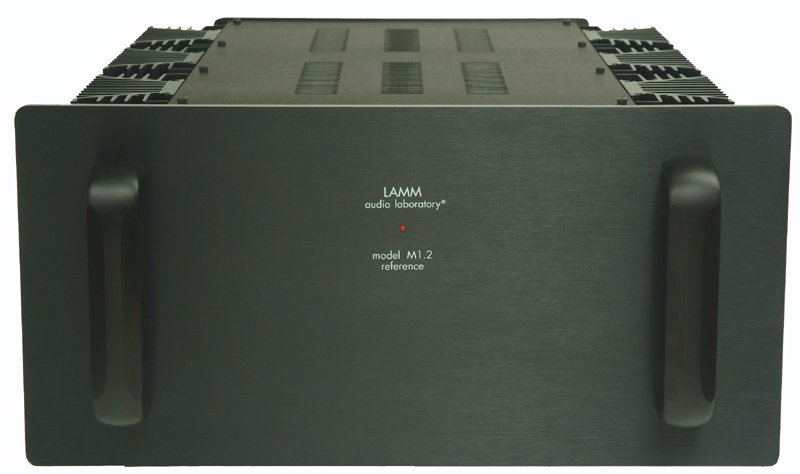
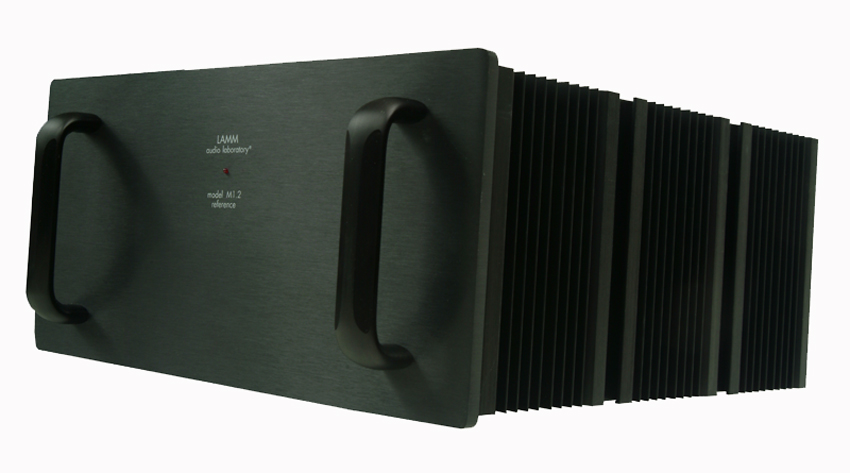
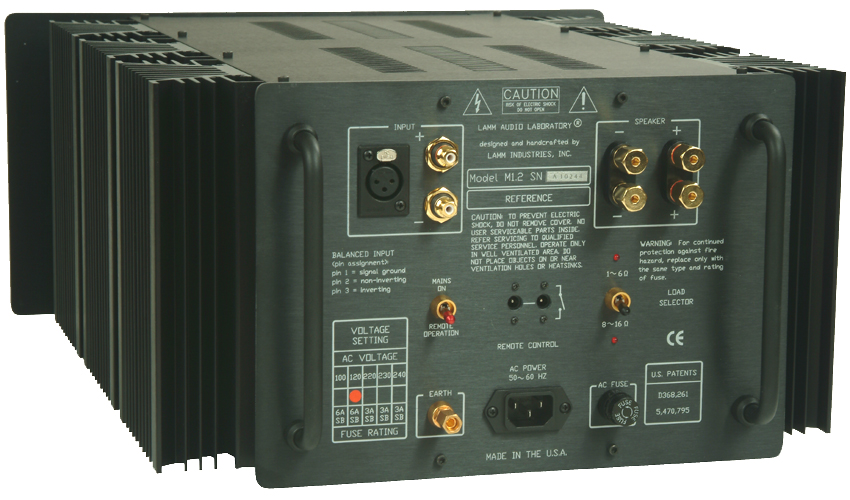
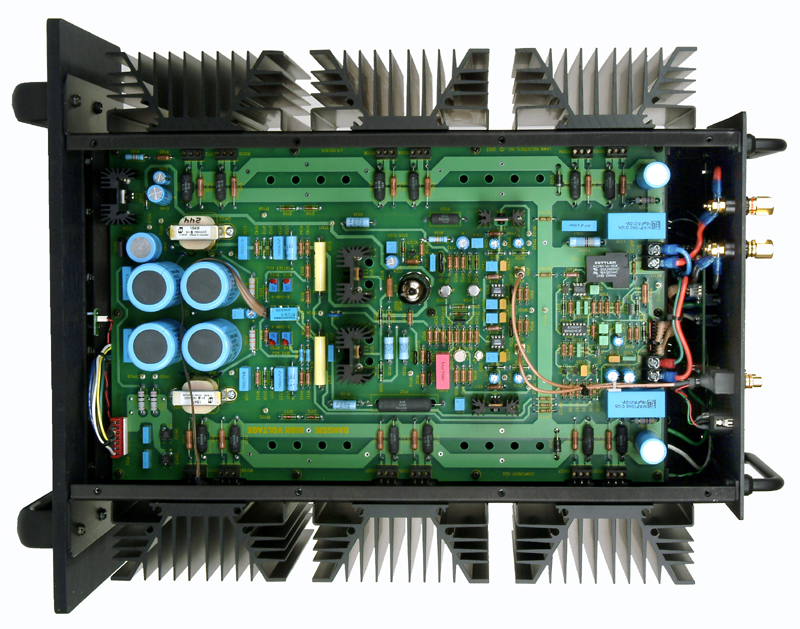
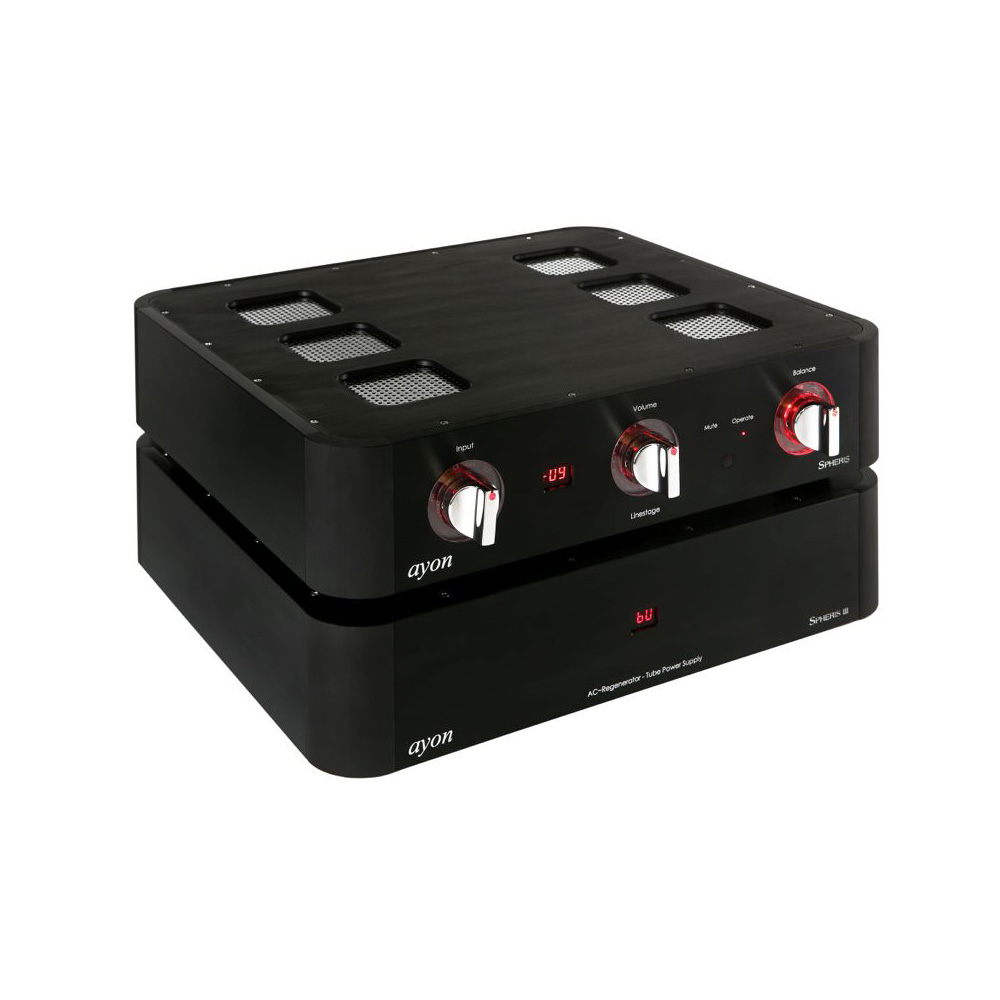
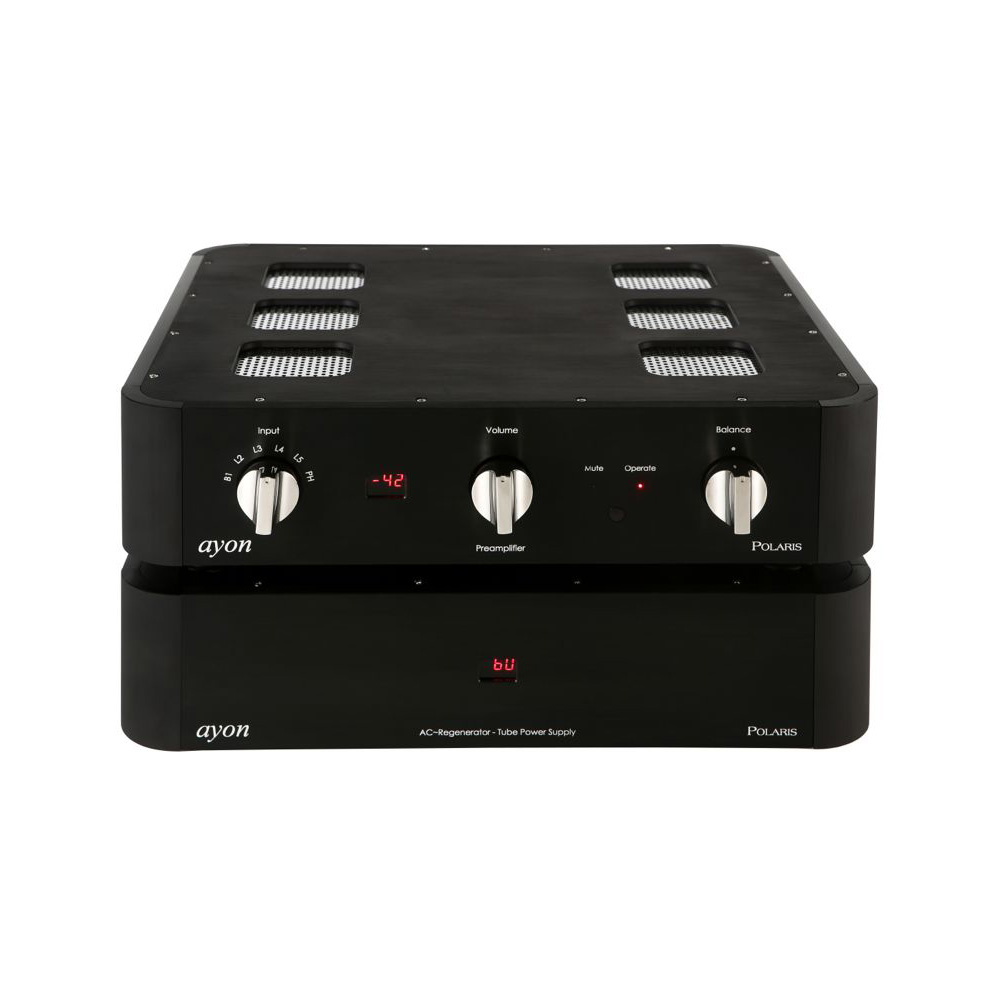
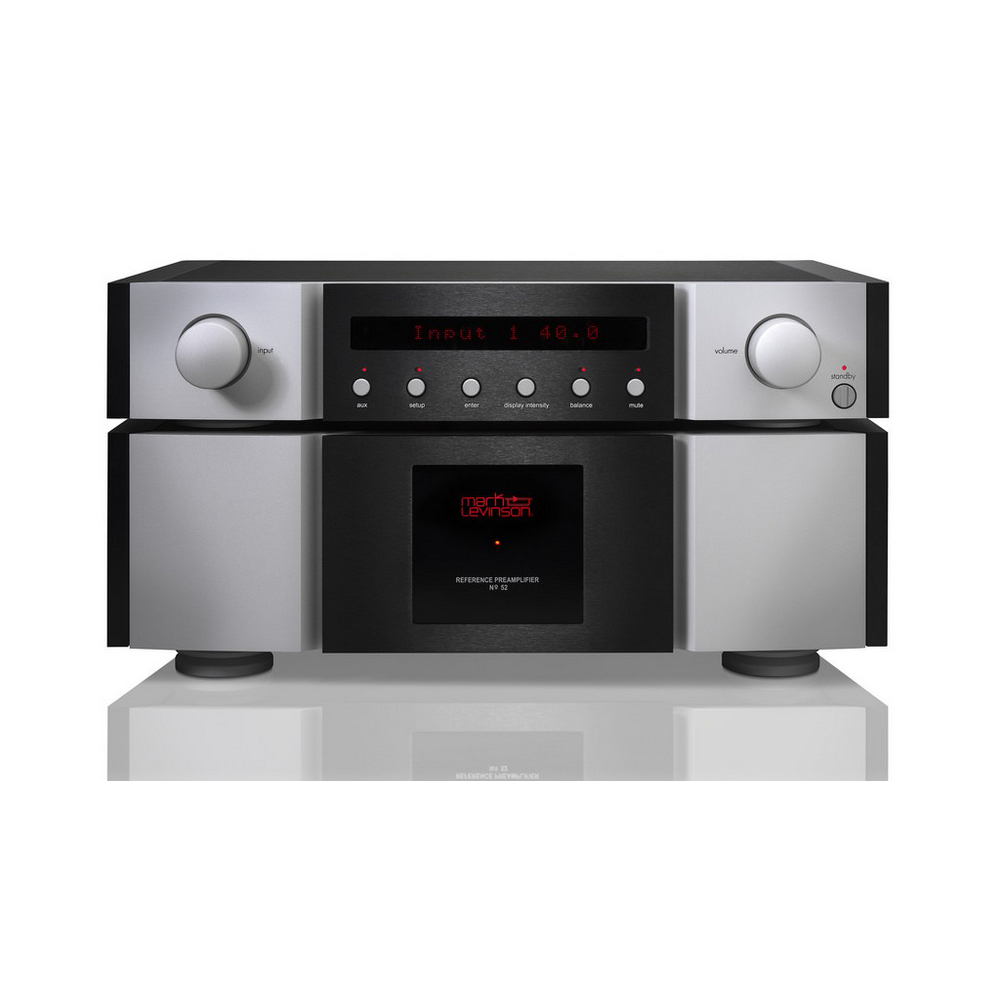
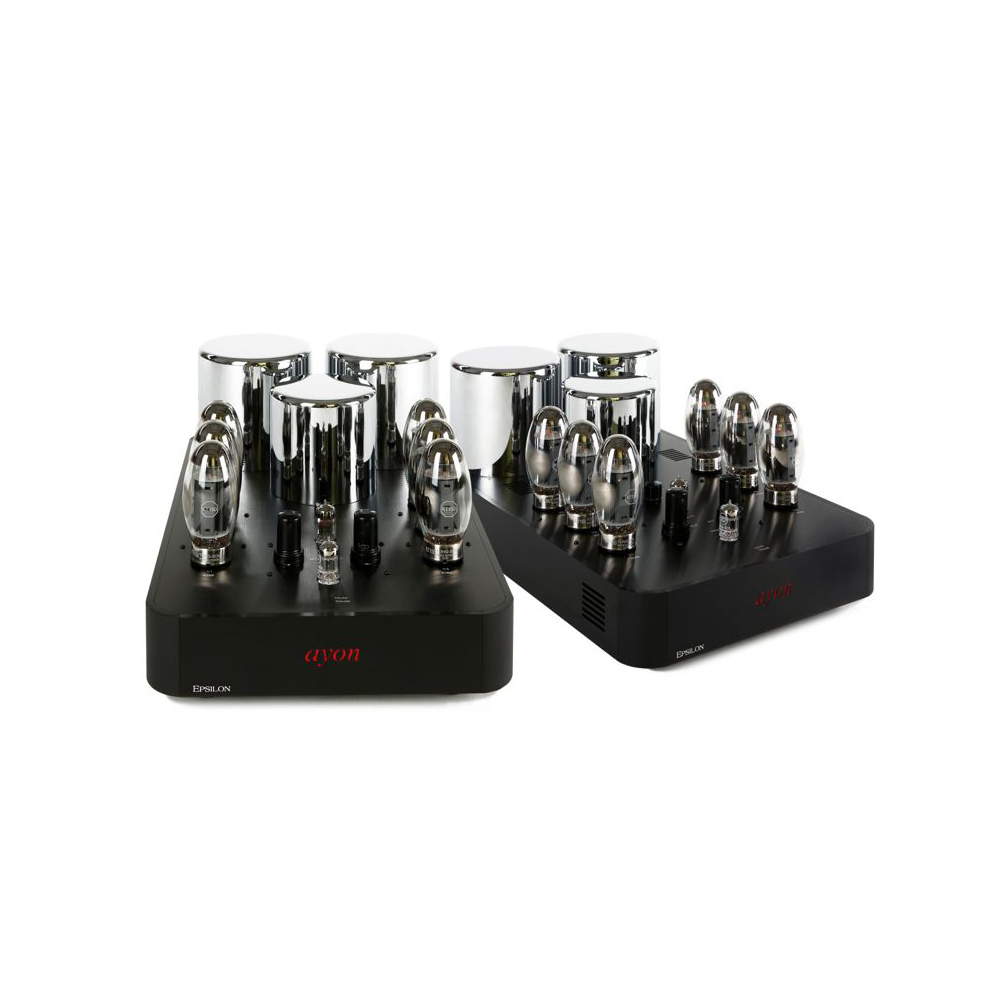
Reviews
There are no reviews yet.